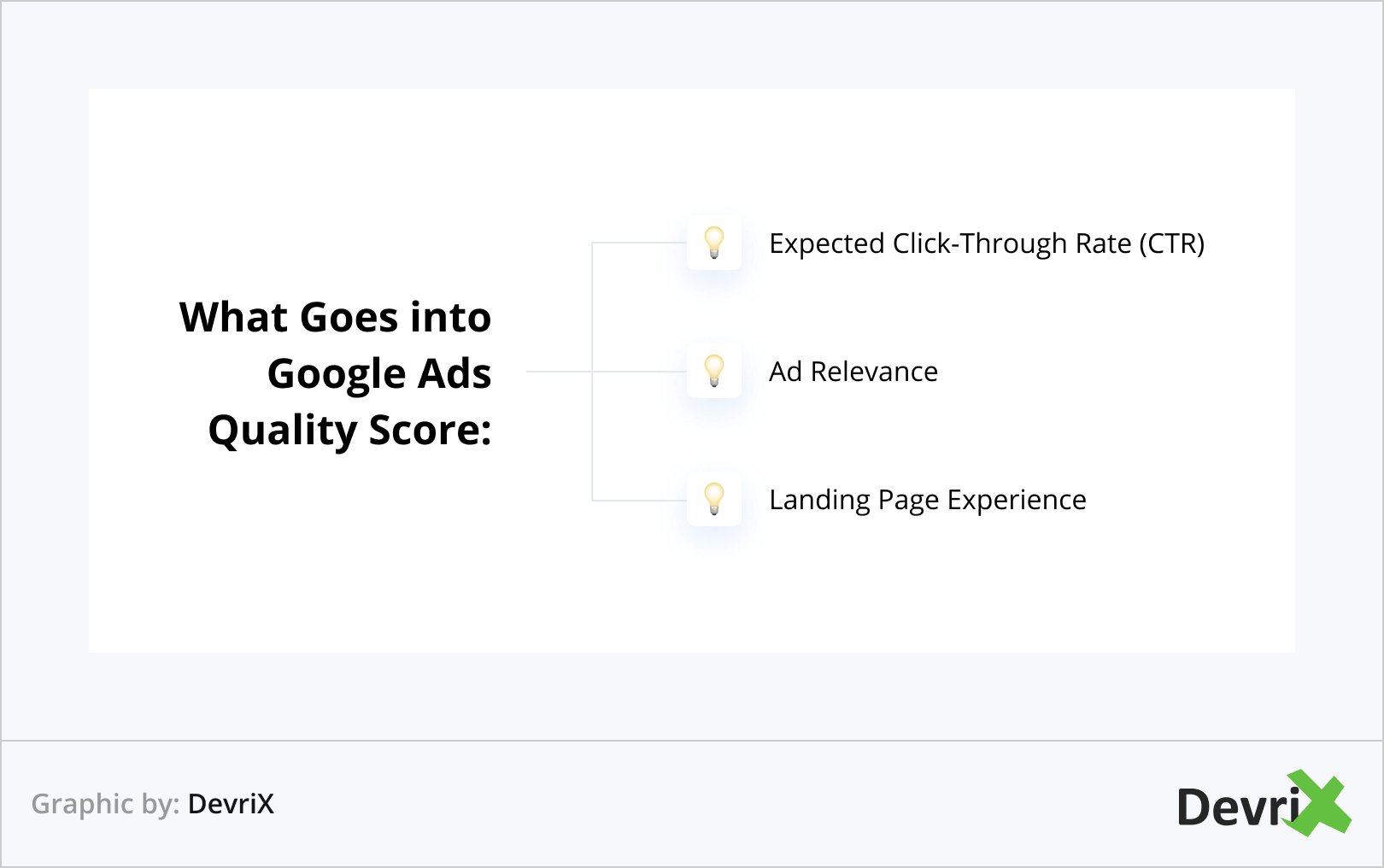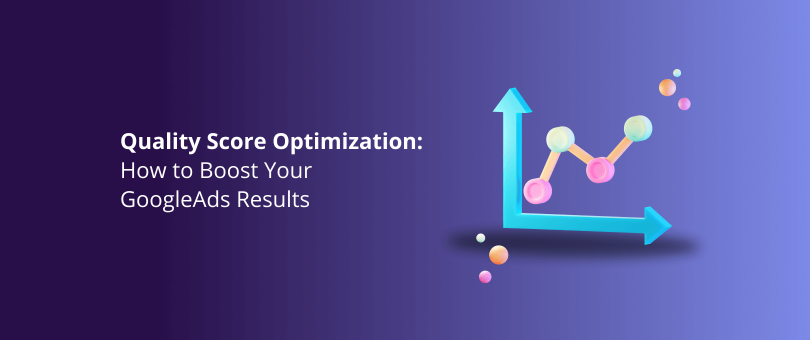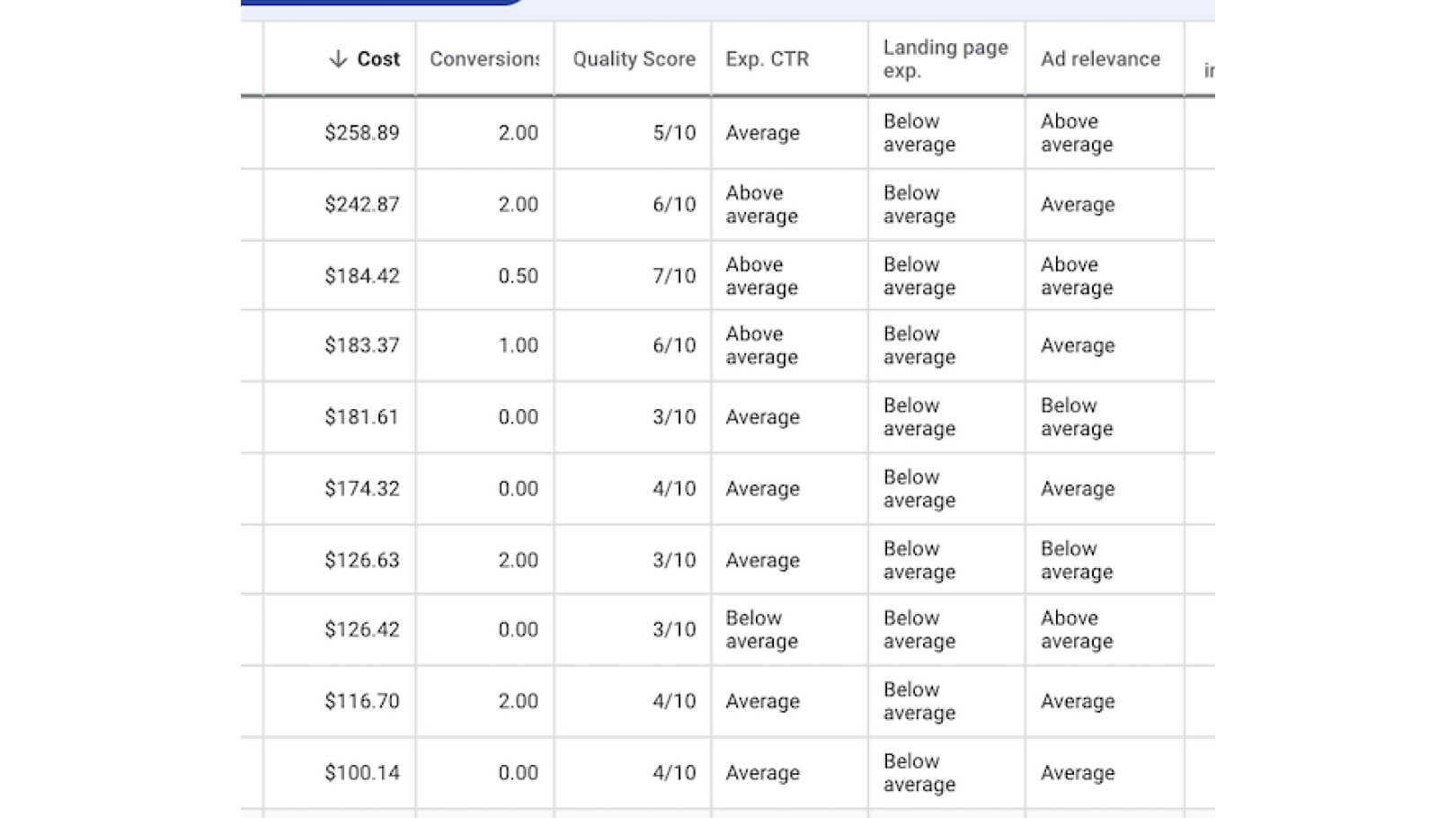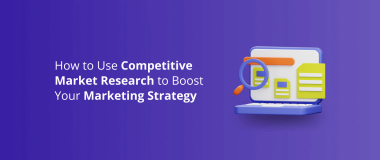Google Ads is an important asset to any online strategy. It can help you build your digital presence by positioning your brand’s name right at the top of the SERPs. Because, let’s face it, regardless of how great your organic ranking is, the paid results are always a step ahead of it.
However, for your ads to be efficient and help you achieve your business goals, they need to deliver results. Google has provided tools that help you with that and one of them is the ad quality score.
Quality score optimization is a way to identify issues with your ads and adjust them in order to make a better impression on users, provide an excellent UX, and boost performance.
In this article, we’ll talk about how to improve Google Ads quality score, but, also, why doing it shouldn’t be an end in itself.
Read on to learn more!
What Is Google Ad Quality Score?
Quality score is a tool, provided by Google, that allows you to diagnose, measure, and improve how well your ads stand against competitors bidding on the same keywords.
The purpose of the quality score is to evaluate the UX your ads provide. Which means that it deals with the user’s POV and the way they perceive the ads when coming across them in the SERPs and/or interacting with them. Therefore, any back-end data, such as ad structure, is not directly relevant to your rating and results.

The main focus areas of the quality score are:
- Expected Click-Through Rate (CTR). This metric shows how likely it is for a user to click on the ad if they see it in search results, or, in other words, how compelling your ad is.
- Ad Relevance. This one focuses on the ad copy and shows whether it is relevant to what the user is searching and their intent.
- Landing Page Experience. This evaluates the experience the landing page provides. Generally, this means whether it is user-friendly, and responds to the ad’s content.
Each of these is rated as Above Average, Average or Below Average, and, based on the combination, the quality score is provided on a scale from 1 to 10.
These results are being calculated separately for each keyword for a period of 90 days and, in the report, you can find both current and historical data. You can compare them to see how your ads performance has changed over time, and cross-reference the information with other factors to figure out why.
Does Quality Score Really Matter?
There’s a lot being said online about whether quality score really matters, or not, and opinions vary from “it’s the most important thing” to “nope, it doesn’t matter at all”.
However, as with almost everything in the field of digital marketing, the simple answer to this question is – it depends.
First of all, quality score is not something that Google uses to define whether your ads make the cut or not. The state of the values it measures is taken in consideration, but the score itself isn’t. As such, it is not a KPI that you should care about by all means.
Depending on how well your ads deliver on your business goals, quality score optimization may not be a top priority for you.
That said, quality score is, indeed, very important because it can give you a hint of what’s wrong with your ads that underperform. The report points you in the right direction, so that you can investigate, and make improvements.
Your ultimate goal is to publish ads that outmatch competitors, make an impression on the user, and drive conversions. To that end, you need to play around with the metrics and try to find what’s dragging them behind.
In a nutshell, by adjusting low-score ads, you can reduce your ad costs, improve how users react to your ads, and, ultimately, make more sales.
What Does Quality Score Optimization Mean?
You’ve probably guessed by now that the end goal of quality score optimization is not to boost your score, but to optimize and improve your ads.
The score itself doesn’t matter, it’s not what fails you or makes you win – it’s simply a symptom of an issue, which gives you a clue what the issue may be. This means that your goal should not be to improve your quality score, but to improve how users experience your ads. If you manage to do that, your score will increase, and so will your ad’s performance.
The optimization process itself involves analyzing your report to identify the keywords that have a low-score and perform average or below average for some of the metrics. If all the fields for a keyword are average and you are satisfied with the end results the ad provides, you may decide not to change anything.
However, scores below average may indicate serious issuers that not only drain your budget but don’t deliver any tangible results to your bottom line.
Where to Find Your Quality Score
Quality score is available in your Google Ads account. To find out yours, go to your account, open the Keywords menu, and click on the columns icon on the right side of your screen. Once you are there you will see the Modify columns for keywords menu with a list of options, one of which is Quality Score. Clicking on it will open the section and provide you with a selection of metrics with check boxes:
- Quality Score
- Landing Page Exp.
- Exp. CTR
- Ad Relevance
- Quality Score (hist.)
- Landing Page Exp. (hist.)
- Ad Relevance (hist.)
- Exp. CTR. (hist.)
Depending on what you want to focus on when reviewing your results, you can pick only one metric or tick all of them. Your selection will show up in the columns next to the keywords they apply to.
How to Improve Google Ads Quality Score
Google Ad quality score optimization can be implemented by analyzing the three main focus points of the score – expected click-through rate (CTR), ad relevance, and landing pages. However, there are other steps you can take to improve your score.
Let’s have a look:

1. Analyze the Expected Click-Through Rate (CTR)
The expected click-through rate shows how compelling your ad is at the moment, as compared to similar ads competing for the same keywords.
Google’s goal is to show users the best type of content – both in organic and in paid search results. This means that if your ad’s creatives and copy are not great, the algorithm may decide not to show it to the users.
The main challenge of PPC ads is that you have quite limited space to make a strong impression. Your copy needs to be short, sweet, and to the point. Furthermore, it needs to be relevant to both the keywords – i.e. respond to user’s intent and query – and to the landing page – i.e. respond to what you are selling.
If your quality score result for this component is average or below average, you should revisit your creatives to see what’s missing.
You should also review the ads of your competitors to see what they are doing better and how you can match and outperform them. Of course, the idea is not to be a copycat but to try to understand why their ads are better than yours.
In addition, use your market research intel to put yourself in the shoes of your customers. Think of the selling points that matter to them – is it the price, the free shipping, the top quality, the uniqueness of your products? By focusing on these in your ad’s creatives, you can make it more compelling and give the user a reason to click on your link.
2. Improve Ad Relevance
Ad relevance is another key component because it defines how clickable your ads actually are. When people key in their queries in the search bar, they have a goal and intent they want to satisfy.
If the user is looking for information and educational content, and your ad tries to sell them a product, they are highly unlikely to click on it. And even if they do, they will be disappointed and immediately leave.
To better understand how well your ad matches what users are looking for, you can review your Search Terms report to see what queries are your ads showing in response to. These are the search phrases that users are keying.
While these should be close to the keywords that you are targeting, they are not always a perfect match, because, well, regular people don’t think in keywords. Furthermore, nowadays, both users and search engines are more into natural language, which means that not only the queries are, more often than not, unique, but the algorithms are becoming more capable of understanding them.
By analyzing how relevant those are to your ad’s content, purpose, and landing page, you can understand (at least partially) why people do or don’t click on your ads.
A direct action that you can take to improve your ad relevance is to create smaller ad groups with better targeted on-point creatives that better relate to different groups of searches, and match the user’s intent to your business goals.
3. Work on Your Landing Page
The third key component is the landing page. While the previous two are crucial for attracting the customer’s attention, this is where you make it or break it.
The landing page should deliver on the promises the ad makes – it should be on point, relevant, and provide what the customer is looking for. If this is not the case, people will be quick to leave or will not engage, which, ultimately, signals Google that something is not right. Hence, the average or below average quality score results.
You can delve deeper into the performance of your landing page from the user’s POV by checking out your Google Analytics reports. If you are seeing high bounce rates, low dwell times, and a hand-full of conversions, this means that you really need to revise that page.
Review your copy, marketing messages, and CTAs. If it’s a product page, make sure that it matches the ad, the keywords, and the intent of the user’s query.
For example, if your ad promotes Bohemian beach wear for the free spirited diva, your landing page should feature style appropriate apparel and accessories, as well as fitting product photos, marketing message, and overall style.
Furthermore, the page itself should be user-friendly, easy to understand and navigate, and provide a seamless experience.
4. Optimize for Your Website Mobile

Nowadays, more than half of the worldwide traffic is from mobile devices, which means that for your landing page to perform well, it should have responsive design or other mobile-friendly interface.
Consider testing the page on different types of devices to see how well it renders, how easy it is to interact with it, and, in a nutshell, whether it provides a satisfying experience to the user.
If this is not the case, when people come across your ads on their phone they may find them interesting and follow the links, but they are highly unlikely to stick around. As a result, you will still pay for their clicks and drain your marketing budget, but with no profit in return.
Making your website (and respectively the landing pages for ads) mobile-friendly, will not only benefit your quality score optimization efforts, but your performance and digital presence as well.
5. Improve Your Loading Speed
Regardless of whether it comes to organic or paid traffic, slow loading pages are frustrating and deliver an unpleasant user experience.
If your landing pages load slowly or show issues with the other page experience signals that comprise the core web vitals, this may drive users away and result in high bounce rates, low dwell times, etc. That’s because, nowadays, people simply don’t have the patience to wait, and if a page doesn’t load in seconds, they close it and leave for the next one.
This behavior affects your quality score and, ultimately, your overall ad performance.
There are multiple problems that can cause a page to load slowly, and most of these require professional page speed optimization. By fixing them, you can improve the user experience, and this will, undoubtedly, boost your GoogleAd results and quality scores.
6. Utilize Ad Extension
Ad extensions do not directly affect quality score optimization. However, they make your ads more interesting and more compelling. By adding different extensions, you provide more relevant information that may attract the user’s attention and show them that what you offer is exactly what they need.
This improves the probability of people clicking on your ads, and boosts your expected CTR.
Depending on your ad’s rank and position, extensions may not show every time your ad is displayed. To improve your chances, you can follow Google’s advice, and make sure they are relevant and properly optimized.
Bottom Line
Quality score optimization may not be the top priority on your PPC-care routine, but it is a great tool that allows you to diagnose issues that may hinder the performance of your ads.
By analyzing your expected click-through rates, ad relevance, and landing page quality, you can identify what causes users to bypass your ads in the SERPs, or engage with them in interactions that don’t end in conversions.
Even if your ad delivers satisfying results, an average quality score may show you that there is room for improvement. By making a few simple adjustments, you can receive more value from your ads, and boost not only their performance, but your bottom line as well.
However, when undertaking quality score optimization, remember that you’re not doing it for the sake of improving your rating, but for better user experience.






